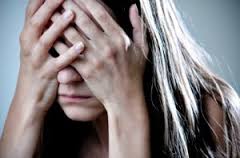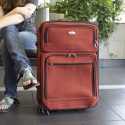What Happens in Anxiety Rehab Centers?

Rehab centers for anxiety can help you get back on your feet.
There are many types of anxiety disorders, and all of them can be debilitating in their own ways. When a person has been struggling with anxiety for a long time, or if his or her anxiety makes it difficult to perform daily tasks, anxiety rehab should be considered.
Types of Anxiety Disorders
The NIMH lists the main anxiety disorders that many people struggle with every day.
- Panic disorder
- Obsessive-compulsive disorder (OCD)
- Post-traumatic stress disorder (PTSD)
- Social Anxiety Disorder
- Generalized Anxiety Disorder (GAD)
- Specific phobias
All of these anxiety disorders could become severe enough that a person would need to go into rehab. When a person’s regular life gets put off track because these anxieties or phobias become too intense, rehab is the best solution. Anxiety rehab centers can help you recover.
Anxiety Rehab
Inpatient rehab is great for anxiety patients because they receive round-the-clock care in a controlled environment, ensuring that their experiences in rehab are controlled by the patients themselves and those monitoring them. Outpatient rehab is also possible, but many of these individuals deal with anxieties so intense that they are not functioning comfortably in their day-to-day lives. “In general, anxiety disorders are treated with medication, specific types of psychotherapy, or both” (NIMH).
Medication
Medications are often very helpful during the treating anxiety disorders, but they are “a short-term measure rather than the solution to anxiety disorders” (SGV). More than anything, medication helps keep anxiety disorders under control while a person receives therapy, which often produces the best long-term solutions.
The NIMH lists some of the medications that are used in anxiety rehab:
- Antidepressants (SSRIs, Tricyclics, MAOIs)
- “Anti-anxiety drugs” (Benzodiazepines)
- Beta-blockers
In anxiety rehab, a doctor will go over your history of medications, find the one that is right for you, and discuss all side effects of the medication with you.
Therapy
Cognitive-behavioral therapy is one of the most useful types of therapy for anxiety disorders and also includes many of the different approaches used in anxiety rehab. Cognitively, this therapy “helps people change the thinking patterns that support their fears” (NIMH). Behaviorally, it teaches them to change their actions toward situations that provoke their anxieties.
Some cognitive-behavior therapy approaches are:
- Exposure therapy: Often starting with a person’s “least threatening fears,” exposure therapy asks the patient to expose him or herself to whichever fears need to be conquered (SGV). If the person is afraid of insects, he or she is asked to think about insects, talk about insects, and gradually become more comfortable with them so that seeing one won’t make that person panic or leave the room. The person is then asked to “appreciate that nothing bad happened,” slowly taking the power away from the fear.
- Recall therapy: This is helpful to those with PTSD, who are asked to gradually recall what happened to them in a safe space.
- Group therapy: Group therapy helps those with social phobias become more comfortable with social situations.
Deep breathing and exercise are also taught during anxiety rehab therapy. Cognitive-behavior therapy usually lasts for 12 weeks and can help people gradually become more comfortable with their own anxieties until, ultimately, they are whittled down to a very manageable level.










